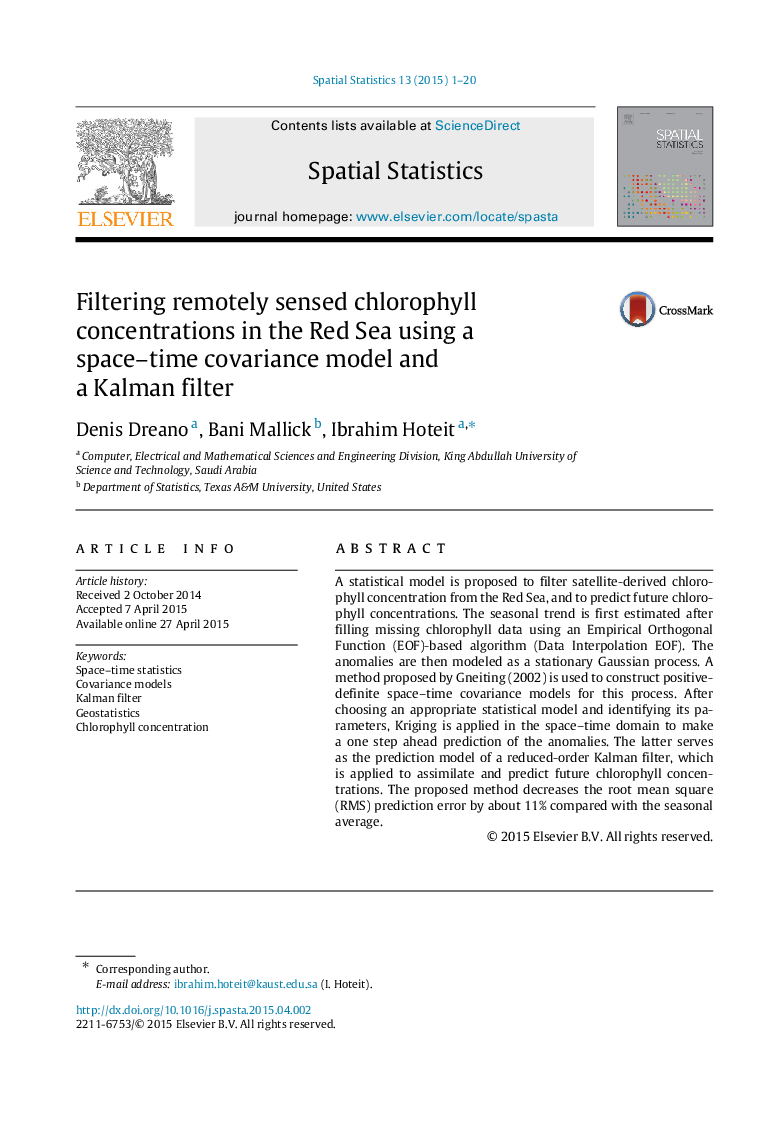| Article ID | Journal | Published Year | Pages | File Type |
|---|---|---|---|---|
| 1064535 | Spatial Statistics | 2015 | 20 Pages |
A statistical model is proposed to filter satellite-derived chlorophyll concentration from the Red Sea, and to predict future chlorophyll concentrations. The seasonal trend is first estimated after filling missing chlorophyll data using an Empirical Orthogonal Function (EOF)-based algorithm (Data Interpolation EOF). The anomalies are then modeled as a stationary Gaussian process. A method proposed by Gneiting (2002) is used to construct positive-definite space–time covariance models for this process. After choosing an appropriate statistical model and identifying its parameters, Kriging is applied in the space–time domain to make a one step ahead prediction of the anomalies. The latter serves as the prediction model of a reduced-order Kalman filter, which is applied to assimilate and predict future chlorophyll concentrations. The proposed method decreases the root mean square (RMS) prediction error by about 11% compared with the seasonal average.
